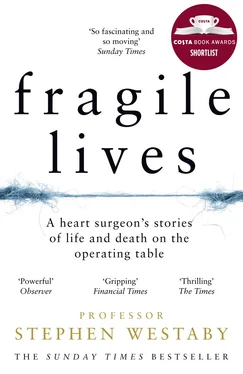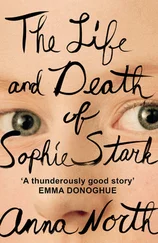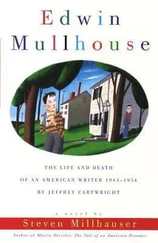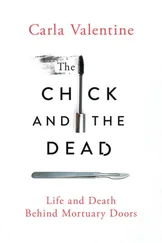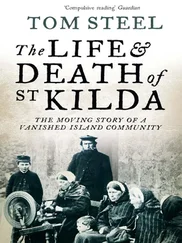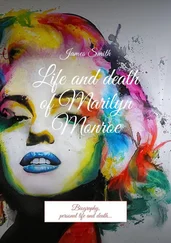But is it all really that simple? My mother used to buy sheep hearts from the butcher; inexpensive and tasty enough, and great for dissecting. It was while cutting these up that I discovered that real hearts are more complex and difficult to understand than in textbook diagrams, as the shape and muscular architecture of the two ventricles are completely different. Nor are they left and right – more front and back. The thicker left ventricle is conical in shape and has circular muscle bands that constrict and rotate the chamber. Now we can visualise how the left ventricle really works. As the powerful muscle contracts and thickens, its cavity narrows and shortens. During relaxation – the diastolic phase – the left ventricle recoils and the aortic valve closes. The recoiling cavity widens and lengthens, sucking blood from the atrium into the ventricle through the mitral valve. Thus every coordinated cycle of contraction and relaxation involves narrowing, twisting and shortening, followed by widening, uncoiling and lengthening. A veritable Argentine tango … but with two important differences: the whole process takes less than one second and the dance goes on forever.
Every cell in the body needs ‘life blood’ and oxygen; in the absence of these the tissues die at different rates, brain first, bone last. It all depends upon how much oxygen each cell needs. When the heart stops, the brain and nervous system are damaged in less than five minutes. Brain death ensues.
Now you are a cardiologist. You know about the heart and circulation. But you will still need a surgeon to help your patient.
1
For this relief much thanks; ’tis bitter cold and I am sick at heart.
William Shakespeare, Hamlet , Act I, Scene i
The finest of margins separates life from death, triumph from defeat, hope from despair – a few more dead muscle cells, a fraction more lactic acid in the blood, a little extra swelling of the brain. Grim Reaper perches on every surgeon’s shoulder and death is always definitive. There are no second chances.
November 1966. I’m eighteen and a week into my first term as a student at the Charing Cross Hospital Medical School in the centre of London, just across from the hospital itself. I wanted to see a vibrant, beating heart, not a slimy piece of lifeless meat on the dissection table. I was told by a hall porter at the school that heart surgery was done over the road in the hospital on Wednesdays and that I should look for the ether dome. Find the green door on the very top floor under the eaves where nobody goes. But don’t get caught, he warned me. Pre-clinical students are not allowed up there.
It was late in the afternoon, already dark, and drizzle was falling on the Strand when I set out to find the ether dome, which turned out to be an antiquated leaden glass dome above the operating theatre in the old Charing Cross Hospital. Not since my entrance interview had I entered the hallowed portals of the hospital itself. We students had to earn that privilege by passing exams in anatomy, physiology and biochemistry. So I didn’t enter by the Grecian portico of the main entrance, but sneaked in through Casualty under the blue light and found a lift, a rickety old cage used to take equipment and bodies from the wards to the basement.
I worried that I would be too late, that the operation would be finished – and that the green door would be locked. But it wasn’t. Behind the green door was a dark, dusty corridor, a depository for obsolete anaesthetic machines and discarded surgical instruments. Ten yards away I could see the glow of the operating lights beneath the dome itself. It was an old operating theatre viewing gallery respectfully separated by glass from the drama on the operating table no more than ten feet below, with a hand rail and curved wooden benches worn smooth by the restless backsides of would-be surgeons.
I sat clutching the hand rail, just me and Grim Reaper, and peered through glass hazy with condensation. It was a heart operation and the chest was still open. I moved to find the best view, settling for a position directly above the surgeon’s head. He was well known, at least in our medical school, a tall man, slim and imposing, with very long fingers. In the 1960s heart surgery was still new and exciting, its practitioners few and far between, and not many had been properly trained in the specialty. Often they were skilled general surgeons who had visited one of the pioneering centres and then volunteered to start a new programme. They were on a steep learning curve, with the cost measured in human lives.
The two surgical assistants and the scrub nurse were huddled together over the gaping wound, frantically shuttling instruments between them. And there it was, the focus of their attention and of my fascination. A beating human heart. In fact it was squirming more than beating, and was still attached by cannulas and tubing to the heart–lung machine. Cylindrical discs were spinning through a trough of blood bathed in oxygen and a crude roller pump squeezed the tubes, accelerating this life blood back to the body. I peered closer but could only see the heart as the patient was completely covered by green drapes, gratifyingly anonymous to all concerned.
The surgeon restlessly shifted his weight from foot to foot, wearing the big, white operating boots that surgeons once used to keep blood off their socks. The team had replaced the patient’s mitral valve but the heart was struggling to separate from the bypass machine. This was the first time I’d seen a beating human heart, and even to me it looked feeble, blown up like a balloon, pulsating but not pumping. On the wall behind me was a box marked ‘Intercom’. I threw the switch and the drama now had a soundtrack.
Against the din of amplified background noise I heard the surgeon say, ‘Let’s give it one last go. Increase the adrenaline. Ventilate and let’s try to come off.’
There was silence as everyone watched the desperate organ fight for its life.
‘There’s air in the right coronary,’ the first assistant said. ‘Give me an air needle.’ He shoved the needle into the aorta, frothy blood fizzed into the wound, then the patient’s blood pressure started to improve.
Sensing a window of opportunity, the surgeon turned to the perfusionist. ‘Come off now! This is our last chance.’
‘Off bypass,’ came the reply, said more as a blunt matter of fact than with any great confidence.
The heart–lung machine was switched off and the heart was now free-standing, with the left ventricle pumping blood to the body, the right ventricle to the lungs. Both were struggling. The anaesthetist stared hopefully at the screen, watching the blood pressure and heart rate. Knowing that this was their last attempt, the surgeons silently withdrew the cannulas from the heart and sewed up the holes, each one of them willing it to get stronger. For a while it fluttered feebly but then the pressure slowly drifted down. There was bleeding from somewhere – not torrential but persistent. Somewhere at the back. Somewhere inaccessible.
Lifting the heart caused it to fibrillate. It was now squirming again, wriggling like a bag of worms, but not contracting, fed by uncoordinated electrical activity. Wasted energy. It took the anaesthetist a while to spot this on his screen. ‘VF,’ he shouted. I’d soon learn that this meant ventricular fibrillation. ‘Shock it.’
The surgeon was expecting this and was holding the defibrillating paddles hard against the heart. ‘Thirty joules.’ Zap! No change. ‘Give it sixty.’
Zap! This time it defibrillated, but then just sat there stunned and devoid of electrical activity, like a wet brown paper bag. Asystole, as we call it.
Blood continued to fill the chest and the surgeon poked the heart with his finger. The ventricles responded by contracting. He poked it again and the rhythm returned. ‘Too slow. Give me a syringe of adrenaline.’ The needle was shoved unceremoniously through the right ventricle into the left, and a clear liquid squirted in. Then he massaged the heart with his long fingers to push the powerful stimulant into the coronary arteries.
Читать дальше
